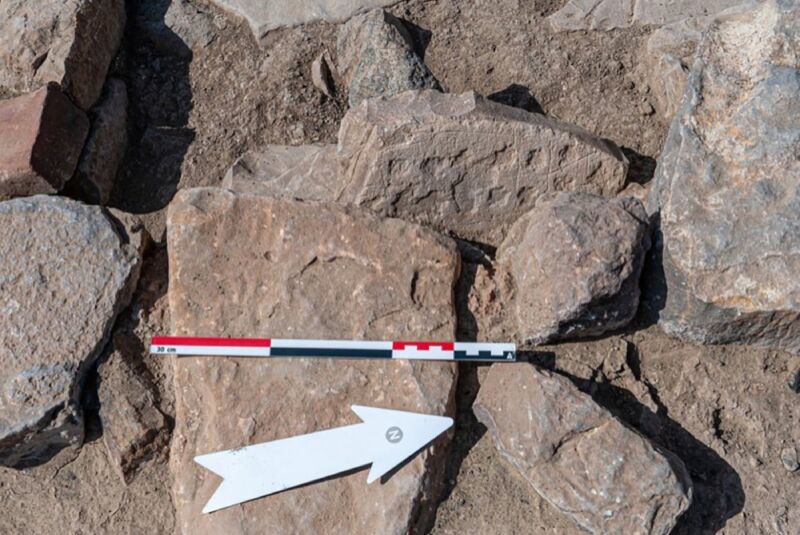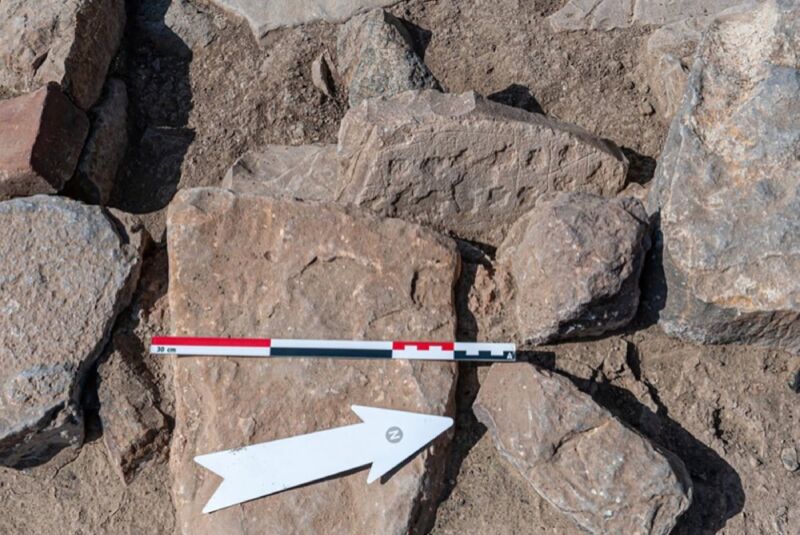
Archaeologists working in Oman’s Qumayrah Valley recently unearthed a rare artifact: a stone board game dating back some 4,000 years. The board features grid-like markings (possibly indicating fields) and holes for cups. It was found at a site near the village of Ayn Bani Saidah.
The excavation is part of an ongoing project to study the Iron and Bronze Age settlements in the Qumayrah Valley. The dig is a collaboration between Sultan al Bakri, director general of antiquities at the Ministry of Heritage and Tourism in Oman, and Piotr Bielinski of the Polish Center of Mediterranean Archaeology at the University of Warsaw. The area is one of the least-studied regions of the country, but the archaeological finds thus far indicate that the Qumayrah Valley was likely part of a major trade route between several Arab cities.
There is archaeological evidence for various kinds of board games from all over the world dating back millennia: senet and Mehen in ancient Egypt, for example, or a strategy game called ludus latrunculorum (“game of mercenaries”) favored by Roman legions. The board just discovered at the Omani site might be a precursor to an ancient Middle Eastern game known as the Royal Game or Ur (or the Game of Twenty Squares), a two-player game that may have been one of the precursors to backgammon (or was simply replaced in popularity by backgammon).





